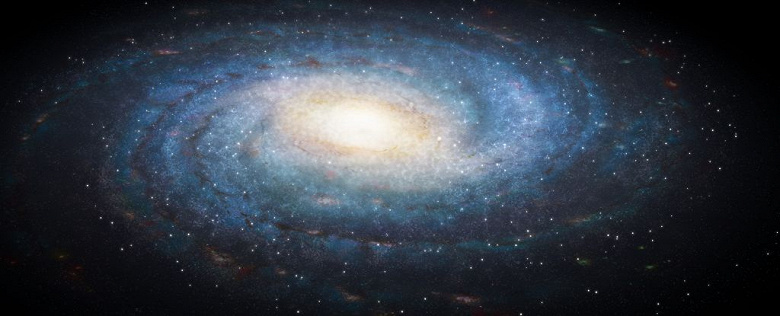The unexpected discovery has given rise to new theories about the mechanism by which phosphorus is formed without the outbursts of massive stars.
The origin of life from “organic soup” is a complex process. This requires many different components assembled in one place and under the right conditions. Although the exact conditions are still a matter of debate, scientists have an idea of what elements of the periodic table are needed.
One important component is phosphorus, which was recently discovered on the outskirts of the Milky Way. The presence of this element among others is considered necessary for the formation of basic biochemical molecules. Therefore, the presence of phosphorus determines the boundaries of habitable zones in galaxies. Phosphorus is typically produced by the death of massive stars, making its presence at the outskirts of a galaxy a rare occurrence. However, the recent discovery of phosphorus in this area suggests that other mechanisms for its formation may exist.

“Phosphorus is an element that requires a special, catastrophic event to form. According to popular belief, phosphorus is formed as a result of supernova explosions of stars with a mass of at least 20 solar masses. They are the source of strong energetic emissions and a series of nucleosynthesis reactions that form not only phosphorus, but also many other heavy elements,” says astronomer and chemist Lucy Ziouris, who works at Arizona State University and Steward Observatory. This is the generally accepted view, and the discovery of phosphorus far from massive stars or supernova remnants suggests that there are other ways this element can be formed.
All the elements we see around us are formed in stars. After the formation of the first atoms of the Universe from the primordial plasma, the atoms were mainly composed of hydrogen and helium, and all other elements appeared after the birth of the first stars. Stars play an important role in the fusion and combination of atoms in their cores, resulting in the formation of heavier elements.
On the outskirts of the Milky Way galaxy
The formation of elements in a star depends on its mass. Stars are the size of our Sun and are smaller able to support reactions that create light elements such as lithium and beryllium when hydrogen and helium combine. More massive stars can produce heavier elements such as oxygen and nitrogen.
However, phosphorus is not produced during such reactions inside the star. Supernova explosions, accompanied by the death of massive stars, are one of the known mechanisms for the origin of phosphorus. Flares eject elements into space, scattering astromaterials into the interstellar medium, where they can be absorbed by new generations of stars, as well as comets and planets.
Massive stars can only form in regions where there is enough material to feed them. As you move away from the center of the galaxy, the density of matter decreases – the outskirts of galaxies are usually populated by massive stars. So the presence of phosphorus in a cloud called WB89-621, located about 74,000 light-years from the center of the Milky Way, poses a mystery to astrochemists.
“The discovery of phosphorus at the edge of the galaxy raises questions and adds an additional piece to our puzzle. The presence of phosphorus in this area suggests that the process of its formation is more complex and is not limited only to supernova explosions,” explains chemist Liliya Koelemey, collaborating with Arizona State University.
There are two main explanations for this phenomenon. One of them is associated with the “galactic fountain” model, which assumes the movement of elements from the inner regions of the galaxy to the outer through supernova explosions, ejecting matter from the galactic disk into the halo and its subsequent cooling and return. However, this explanation is questionable, since observational data on galactic fountains is not yet sufficient.
Another explanation involves the possibility of phosphorus being formed in the region around the core of less massive stars by capturing neutrons. Here, silicon isotopes can capture additional neutrons to form phosphorus.
The discovery of phosphorus on the outskirts of the Milky Way is an exciting and important study, valuable for understanding the formation of life in the Universe. This element is the last of the NCHOPS – nitrogen, carbon, hydrogen, oxygen, phosphorus and sulfur – essential building blocks for the emergence of life and which define the habitable zones of a galaxy. Previously, astronomers had not paid much attention to the outskirts of galaxies in search of exoplanets with biomarkers, because they believed that regions far from the center of galaxies did not have enough phosphorus. However, this discovery allows us to expand the scope of searches.




